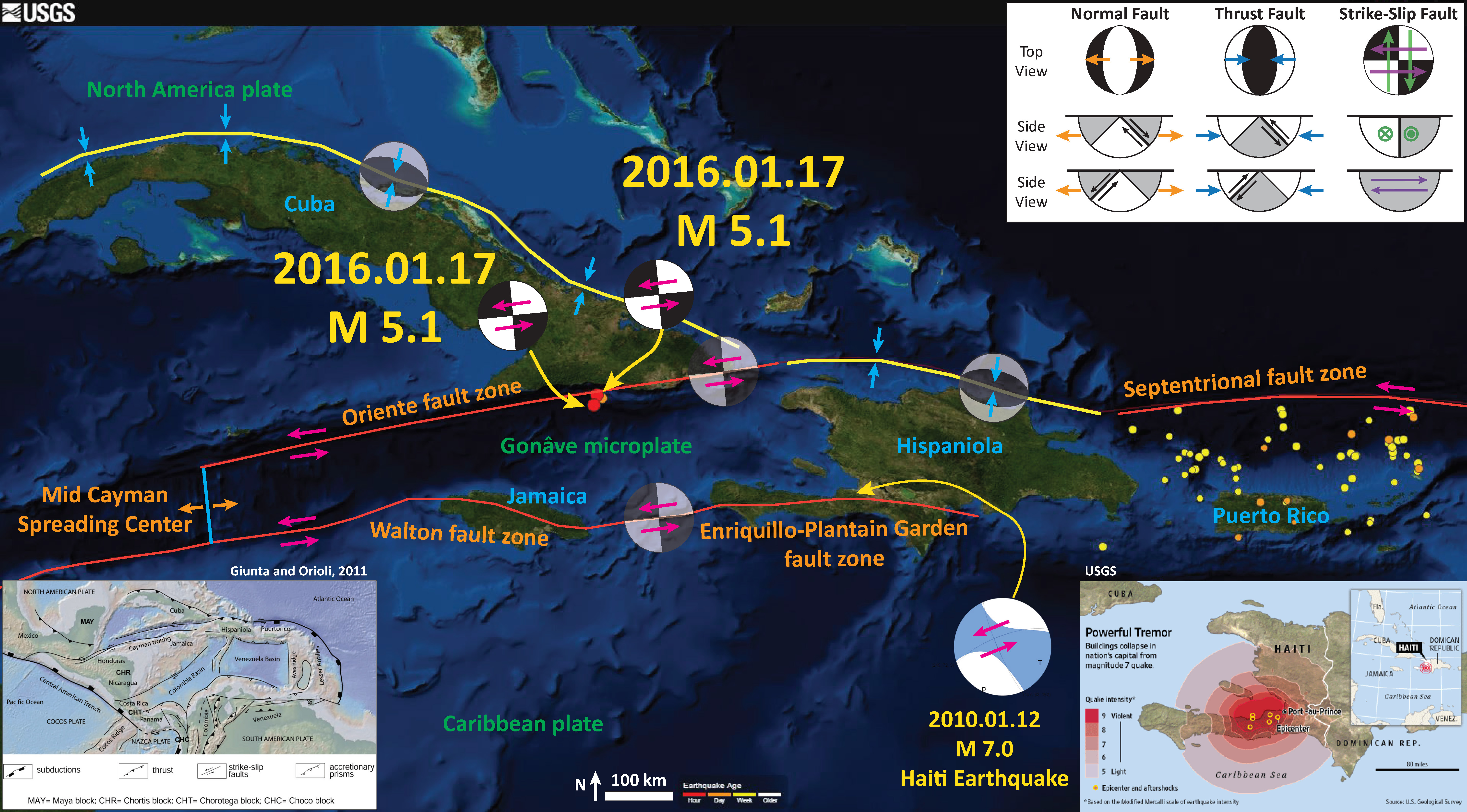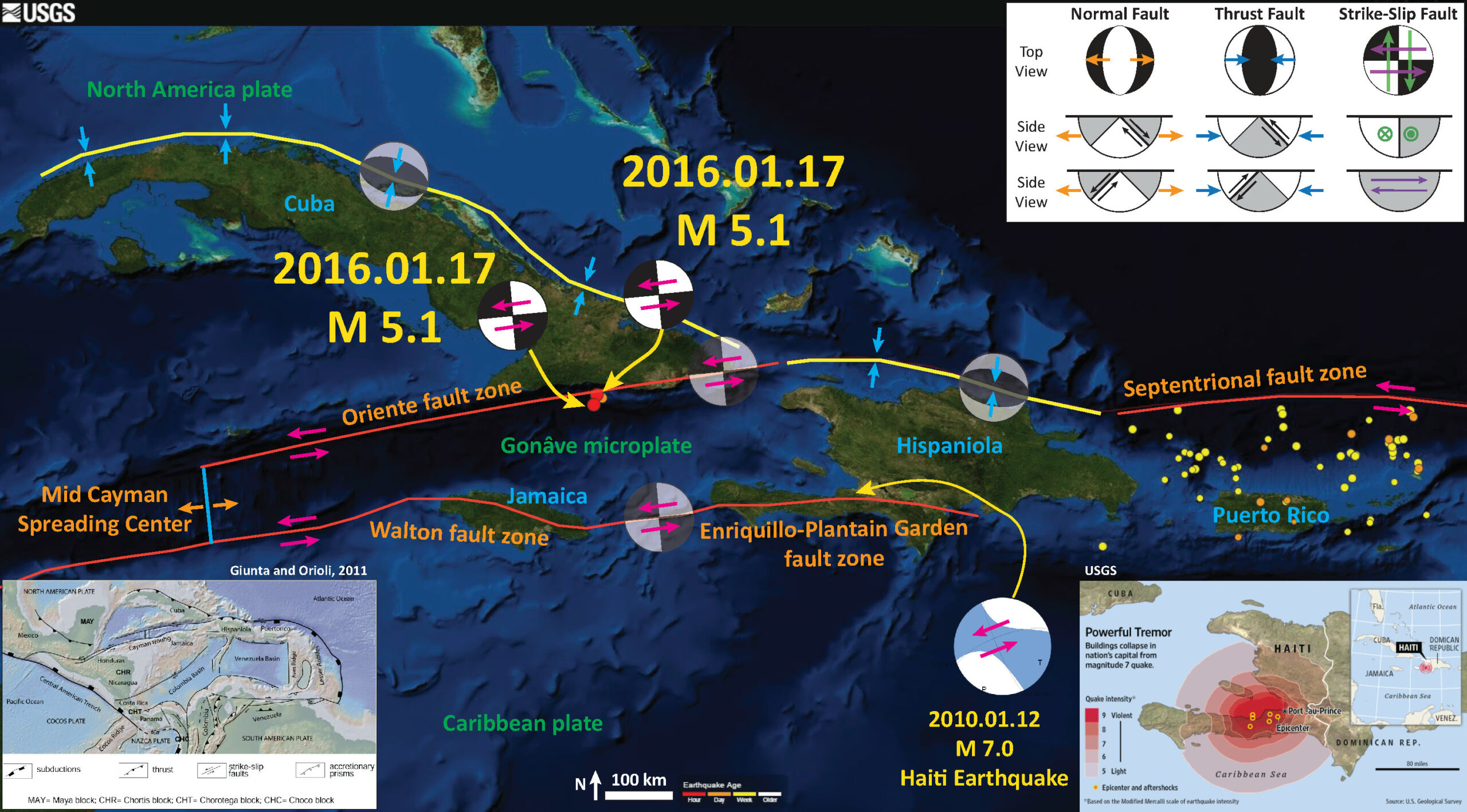We just had three earthquakes on the southern boundary of Cuba.
-
Here are the USGS websites for these earthquakes:
- 2016.01.17 M 4.6
- 2016.01.17 M 5.1
- 2016.01.17 M 5.1
These do not have USGS moment tensors, but I suspect that they are strike-slip earthquakes associated with the Oriente fault zone. I include idealized pure strike slip moment tensors as examples of what they might look like. Below is a map showing the epicenters of these 3 earthquakes. I include some line work showing a simplified view of the plate boundary faults in this region. I include a more detailed fault map from Guinta and Orioli (2011). I also include some information about the 2010.01.12 M 7.0 Haiti earthquake. Here is the USGS web page for the Haiti earthquake. The Haiti inset shows shaking intensity, using the Modified Mercalli Intensity Scale, for this earthquake. There is quite a bit of summary information on the Wiki page for the Haiti earthquake.
There is a legend that shows how moment tensors can be interpreted. Moment tensors are graphical solutions of seismic data that show two possible fault plane solutions. One must use local tectonics, along with other data, to be able to interpret which of the two possible solutions is correct. The legend shows how these two solutions are oriented for each example (Normal/Extensional, Thrust/Compressional, and Strike-Slip/Shear). There is more about moment tensors and focal mechanisms at the USGS.

Here is the Guinta and Orioli (2011) tectonic map. They present their interpretation of the geologic history in their paper here.

Here is another figure from Guinta and Orioli (2011) showing even more detail about the faulting and geologic units of this region. They discuss the different terranes shown in this figure within their paper as well.

Here is the USGS poster for the 2010 M 7.0 Haiti earthquake.

-
References:
- Guinta, G. and Orioli, S., 2011. The Caribbean Plate Evolution: Trying to Resolve a Very Complicated Tectonic Puzzle in Sharkov, E.B., ed., New Frontiers in Tectonic Research – General Problems, Sedimentary Basins and Island Arcs, DOI: 10.5772/18723

1 thought on “Earthquake Report: Cuba!”